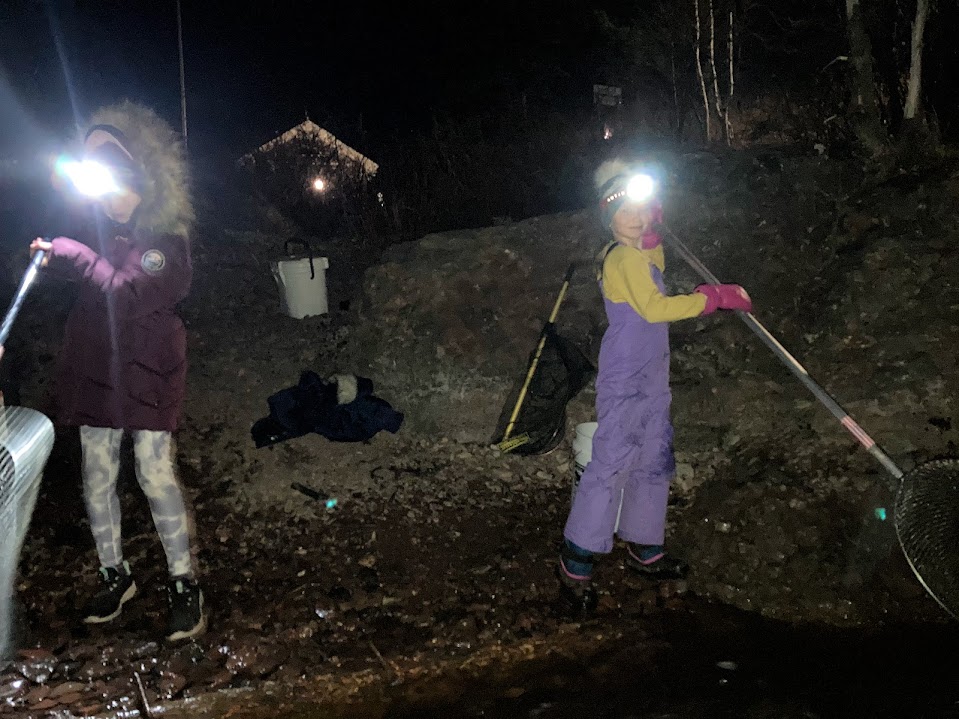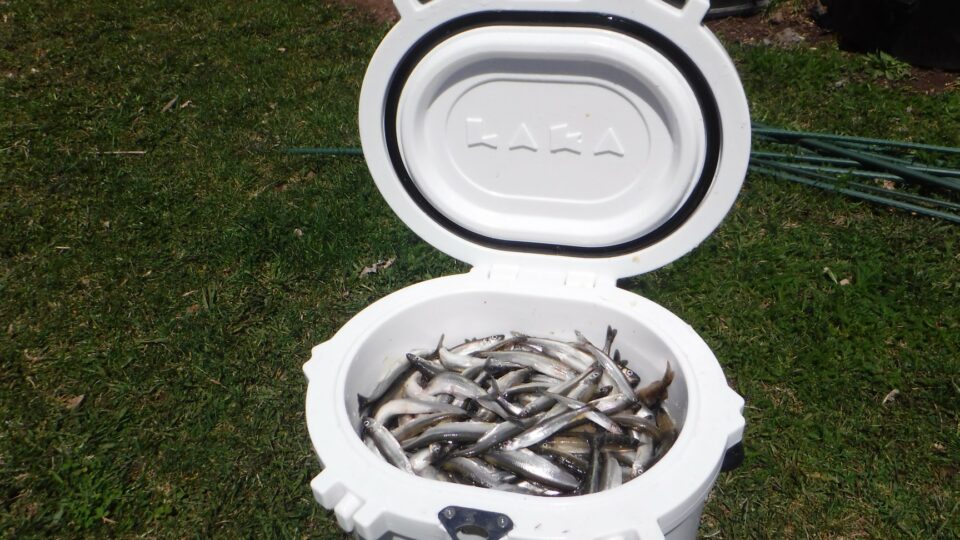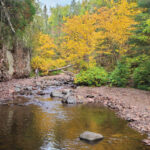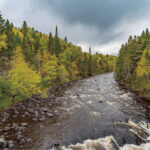Does standing in a cold, rushing river, in the pitch dark, sound attractive? How about adding a heavy wooden net with steel mesh that you swing back and forth blindly underwater? This is what thousands of people line up to do nightly for a few weeks each spring in search of the almighty (6-inch long) smelt—Lake Superior’s most sought-after fish. That’s right—this invasive species, not much longer than your finger, brings people in droves from as far away as the Twin Cities and Rochester in a maniacal search for little slivers of silver satisfaction.
So why would anyone want to expose themselves to this suffering? To the cold hands and runny noses, to sleep deprivation and a severe fishing hangover?
Boom or Bust
The fact is, smelt are the true boom or bust fish. You can net all night and not get a one, or you can get dozens of these wacky, wonderous silver bullets in a single dip of your net. They are the gambling man’s fish. Go more often, and your chances of hitting the boom increase. Hit it right, and you could have five, 10, even 15 gallons of smelt by morning. Then go make a royal smelt fry for the whole neighborhood.
Smelt enter North Shore rivers to spawn at about the time when river water temps hit 43 degrees F. This is your chance to catch them. The smelt “run” is not an exact science though. Just ask Tim Befera, who’s been smelting the Lester River in Duluth since 1966.
“You just have to start out early in the season. Get out there when the water’s in the low 40s, and just see what the heck they’re doing,” says Befera. “You have to think like a smelt, if you can. That’s the fun thing—they’ve got a little brain the size of a grain of sand, but they can still outsmart us.”
So, with that encouragement in mind, grab your net and give it a shot. But make sure you wait until dark—the smelt don’t run upriver until nighttime falls. Even then, the run can be hot from 11 p.m. to midnight, and then nonexistent a half hour later. Or vice versa.
Commitment
The inexplicable pull of the smelt is strong. Take Kevin Makie—an investment manager from Minneapolis—who drives six hours round-trip from his home to enjoy the rhythmic dipping and dragging of his net in the Lester River. Makie has been netting at Lester for the last 10 years, after first being exposed to smelting by his parents in the 1970s on the Knife River. Makie makes the trip from Minneapolis five or six times a season on average, and sometimes even comes on back-to-back nights when the run is good.
“Sometimes the first two times I come up I get skunked, or maybe I get only a dozen or two,” says Makie. “But I like 3 or 4 gallons at least to freeze, and then eat them throughout the year.” So, Makie keeps trying. He’s had some historic nights netting until 3 a.m., then heading home to Minneapolis, and going straight to work. “It’s happened that I’m coming back from smelting, and I get caught in the rush hour traffic going into Minneapolis. Then I get a couple hours of sleep before going to work. It’s not something I try to do too often when I go smelting.”
Beginner’s Luck
Smelting is best done with a buddy, or two. The water is freezing cold in early May, and the heavy flows hurtling down North Shore rivers (especially this year, with 3 feet of snow in the woods still in April), can sweep you out into the lake. Make sure you’re wearing a reliable pair of chest waders. You don’t want to find out mid-river that you’ve sprung a leak. Smelting from shore is difficult to impossible, so be prepared to wade out at least a couple of feet deep.

Befera and his wife Raquel have the following advice for beginners. “Start early enough in the season and establish yourself a little bit. My suggestion is to watch other people first, see where they’re getting them, and then move in either upstream or downstream, so you don’t disrupt them. Start talking to them. Say ‘Hi, I’m new to smelting,’ and pretty soon you’ve got yourself a friend. It takes about two minutes. Be kind. Be humble.”
Then get ready for a thrill. That feeling of euphoria when you can do no wrong. When the smelt seem to be swimming right into your net. It will happen, and you’ll feel on top of the world.
Lester River: Duluth’s Netting Mecca
Smelt can be netted all up and down the North Shore in late April-early May. Smelt can even be caught at the outlet of Chester Creek, right in downtown Duluth. But Befera says the Lester is the North Shore’s premiere netting grounds, thanks to its accessibility and natural beauty.
“To me, the place to be is Lester River,” he says. “You’ve got lights around (from London Road), and you can look down the lake at the Twin Ports all lit up. It’s just a beautiful setting. You can drive to it, and if you get a real active bite, where you’ve got a couple pails of smelt, you can easily carry them back to the car.”
Hints from Nature
The big question in smelting is timing. Why do smelt run so well one night, and so poorly the next? Is there a way to predict when the optimum time will be? Befera suggests reading nature for clues. “If you can find a little vernal pond close to Lake Superior, where the peepers live, they’re the best sign of all. When you can hear the peepers, get down to the lake with your smelting net.”
Finally, Befera notes that aquatic birds can clue us in to smelt behavior as well. “Often times you can see the fish-eating birds like the grebes and terns staging just offshore from the Lester River mouth. That’s a signal the smelt are getting ready to run.”
The smelt run is short, but sweet. Check out this authentic North Shore fishing culture at a river near you






